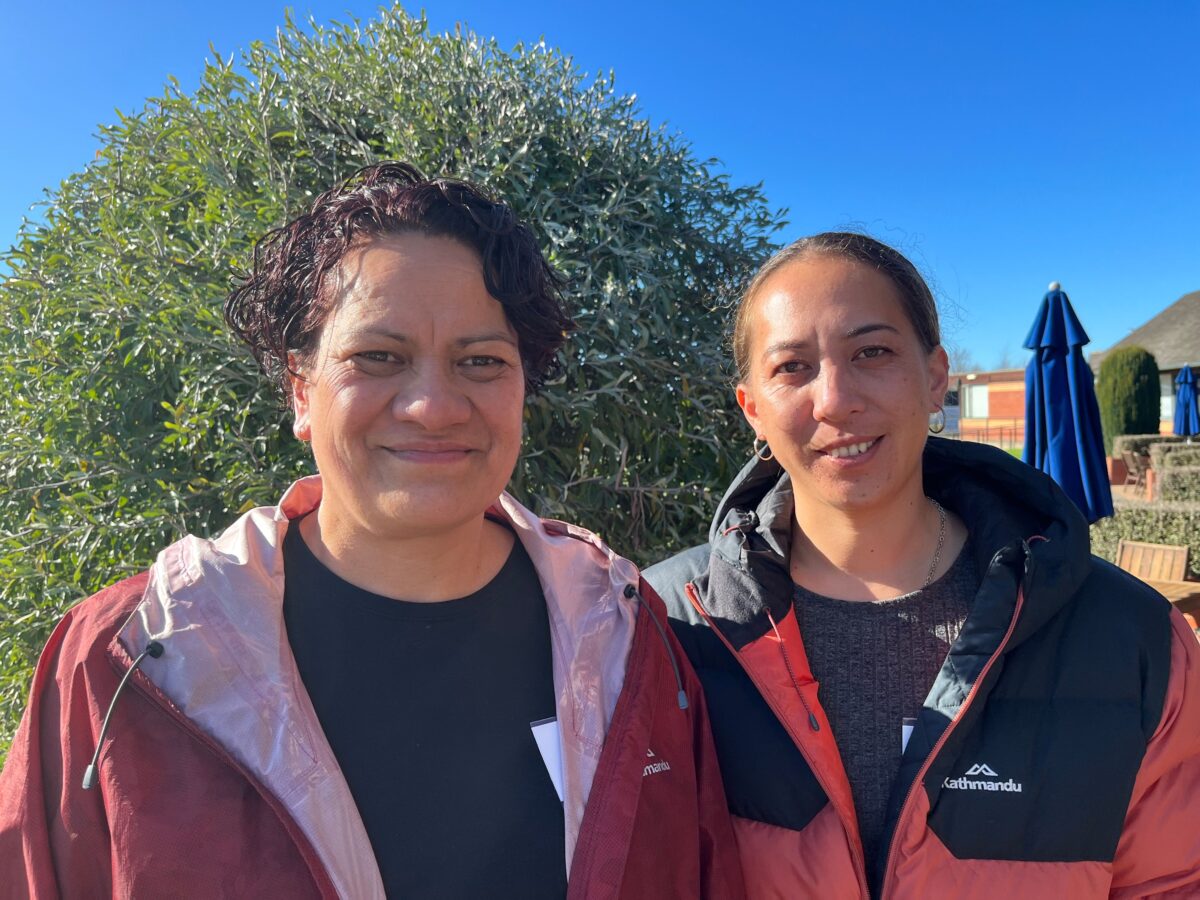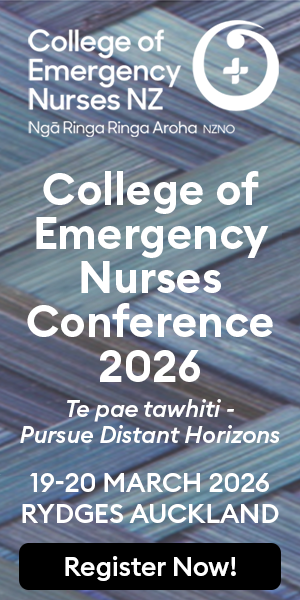Enrolled nurse (EN) Jahnetta Tau was a delivery driver before being offered the chance to study nursing – thanks to a small workforce initiative aiming to turn the tables on health inequities.
Tau, who has two young children, is one of 26 kaimahi (worker) at Māori, iwi and Pacific health providers who have signed up for an 18-month diploma in enrolled nursing, as part of a nursing workforce initiative funded by Te Whatu Ora.
Barriers, such as a lack of financial support, are reduced or eliminated in the scheme for kaiāwhina (unregulated health worker) who have their fees paid, continue to receive an income, and are guaranteed a job when they finish.
‘The kaimahi who have been given this opportunity still cannot believe this is happening, as it has been a lifelong dream for them to attend university.’
Tau, who works for Ki A Ora Ngātiwai in Whangārei, said she felt an 18-month diploma course would be more manageable than a three-year degree.
“It was so hard, but I’m here,” Tau said while visiting the EN section conference in Christchurch recently.
The earn-as-you-learn (EAYL) initiative, is a collaboration between the University of Auckland, Te Whatu Ora, Māori and iwi health providers, polytechs, and kaiāwhina, with funding in place until late 2024.
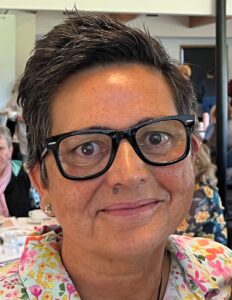
Tau said seeing her father struggle to navigate the health system following a stroke motivated her to study nursing.
“I want to help our people get through the system and be a role model to my kids.”
Ngā Puhi wahine and EN Virginia Wati had never considered training to be a nurse, but is pleased she took the step and graduated last year.
The mother of seven said she had been reluctant to visit health-care services in the past, and only went when she felt she had to, as the experiences were not generally affirming of her Māori heritage.
In 2020, during the COVID-19 pandemic response, Wati began working as a kaiāwhina (health care assistant) at Te Hā Oranga, operated by Ngāti Whātua, in Dargaville.
She decided to study enrolled nursing through the initiative, partly in memory of her late mother who was a nurse.
“It brought back memories of my Mum.”
Wati, 54, was the first student to graduate with an EN diploma from NorthTec under the University of Auckland initiative.
Since graduating as an EN, she has worked with young people, providing lifestyle assessments and early intervention for drug and alcohol use, anxiety, depression, and domestic violence.
Māori and Pacific peoples are significantly under-represented in nursing, making up just 8 and 3.5 per cent of the workforce, respectively. This compares to Māori being 17.4 per cent, and Pacific peoples, 8 per cent, of the national population.
But Māori made up 21 per cent of the unregulated health workforce in 2017. This figure likely increased during the COVID-19 pandemic as kaiāwhina were employed for a “surge workforce”.
‘Enrolled nursing is its own designation, as it should be, but for others this will be their pathway into a future nursing career.’
The workforce initiative coordinator Coral Wiapo believes the model has potential to make a real impact on lifting health outcomes and the Māori nursing workforce.
“These are people who are well invested in their communities, they’ve been there for generations, their children are at school there. This is a sustainable workforce found in the places where they live, work and play.
“So [the initiative] enables them to provide services for their community, that they couldn’t do in the kaimahi role.”
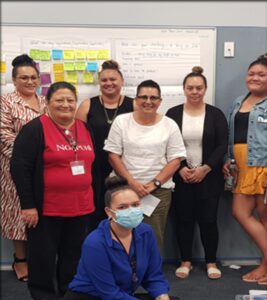
To support the growth of the Māori nursing workforce, health-care providers need to fill the kaiāwhina roles, while their staff member is studying full-time, and provide preceptor support during placements.
Māori and iwi providers who have participated are impressed by the initiative.
“The kaimahi who have been given this opportunity still cannot believe this is happening, as it has been a lifelong dream for them to attend university,” a CEO of one rural Māori provider said in an email to the coordinator.
So far this year, 25 EN diploma students in Te Tai Tokerau and Tāmaki Makaurau are expected to graduate. Of those students, 84 per cent are Māori, and 16 per cent are Pacific.
Turning the tables on inequity
Key to the initiative’s success was a co-design process based on kaupapa Māori principles and ideas, Wiapo said.
“Te reo Māori, mātauranga Māori (Māori knowledge), tikanga Māori (Māori custom) and ahautanga Māori (Māori characteristics) were actively legitimated and validated,” Wiapo and co-authors said in an article about the initiative recently published by Nursing Praxis journal.
Colonial attitudes, including a belief in the supremacy of westernised education and health-care have contributed to the low number of Māori in nursing, the authors said.
ENs, as a professional group, have suffered hurt and distress as a result of demeaning attitudes which questioned their value in the health system – with the role abolished altogether from 1993 to 2002, the article said.
For Māori ENs, this stigma was compounded by racist attitudes, and has contributed to limiting the growth and progression of the Māori nursing workforce.
‘Te reo Māori, mātauranga Māori (Māori knowledge), tikanga Māori (Māori custom) and ahautanga Māori (Māori characteristics) were actively legitimated and validated.’
The initiative’s coordinators and stakeholders say supporting kaimahi, who live and work in “some of the most underserved communities”, to become regulated health professionals through a kaupapa Māori EN diploma will build the capacity of the nursing workforce.
“Enrolled nursing is its own designation, as it should be, but for others this will be their pathway into a future nursing career,” Wiapo said.
She said there was no reason the same model could not be developed for a bachelor of nursing degree.
Future for initiative uncertain
Co-leader of the workforce initiative and senior lecturer Susan Adams said discussions were under way with Te Whatu Ora about extending funding for the initiative beyond the end of 2024.
Adams said the nursing pipeline workforce team, led by Te Whatu Ora and Te Aka Whai Ora were aware of, and supported the initiative.
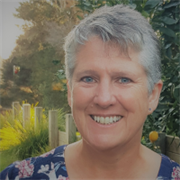
Kaitiaki asked Te Whatu Ora and Te Aka Whai Ora how much funding had been allocated to workforce initiatives, including the kaimahi-to-EN programme. They did not respond to this request in time for publication.
In an earlier joint statement, Dale Oliff, Te Whatu Ora chief nursing officer, and Te Aka Whai Ora chief nursing officer Nadine Gray said Te Aka Whai Ora Te Aka Whai Ora will use $17 million of Budget 22 investments to support Māori workforce development to support Māori workforce development.
Increasing the number and type of Māori health workers was a priority action in Te Pae Tata – Interim New Zealand Health Plan 2022-2024.
Work under way included prioritising Māori and Pacific nurses under the return to nursing support fund, and the nurse practitioner training programme, they said.



